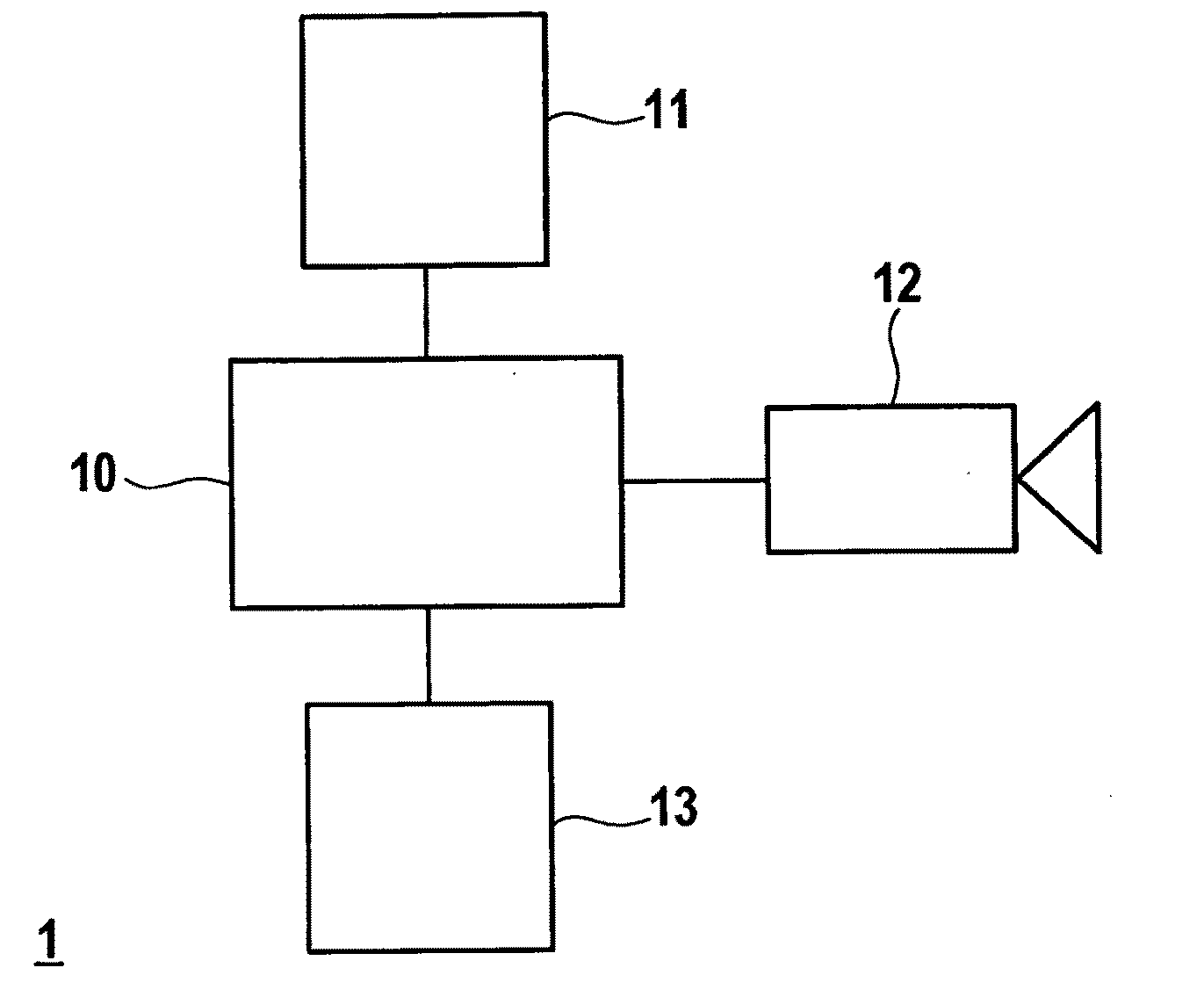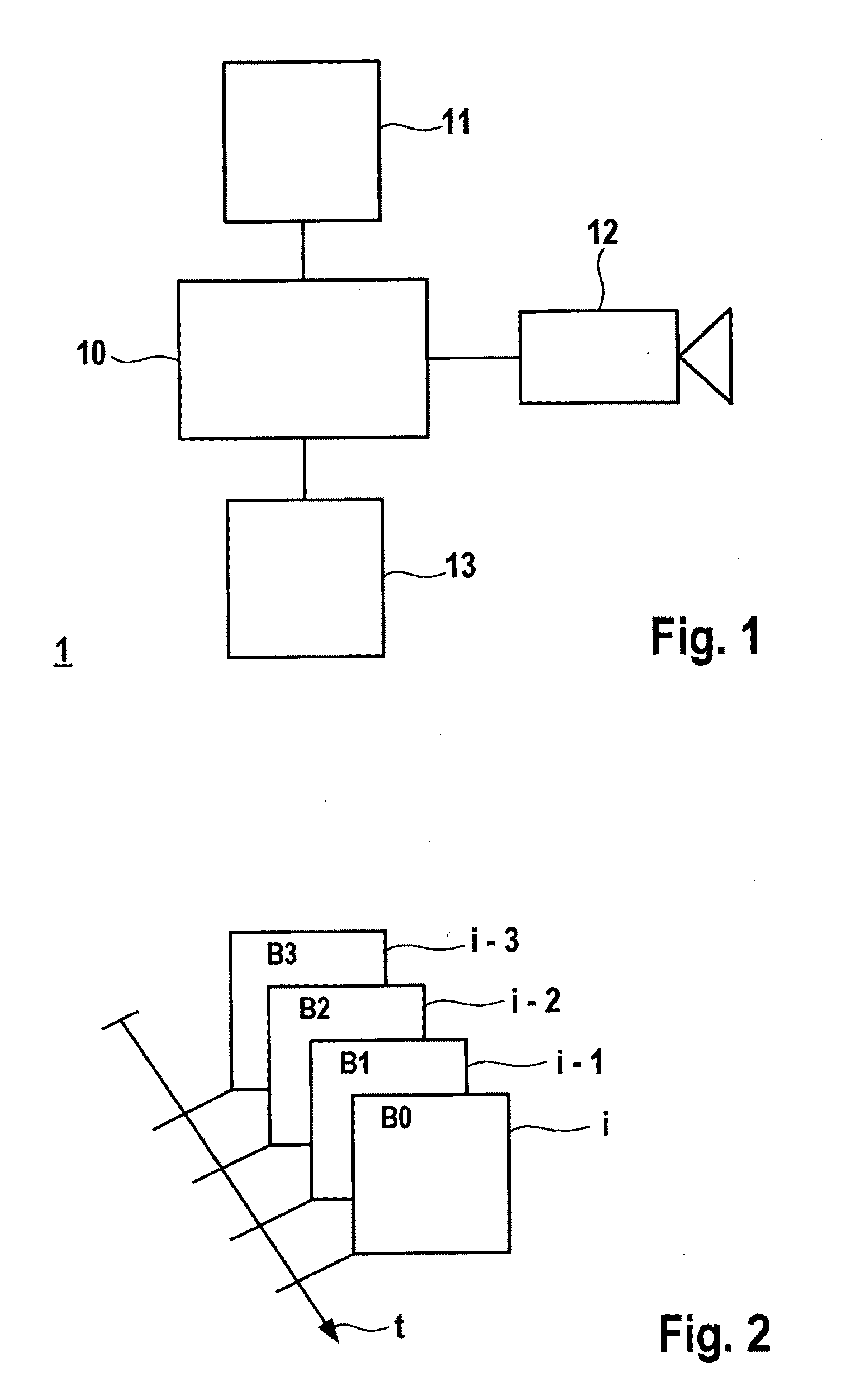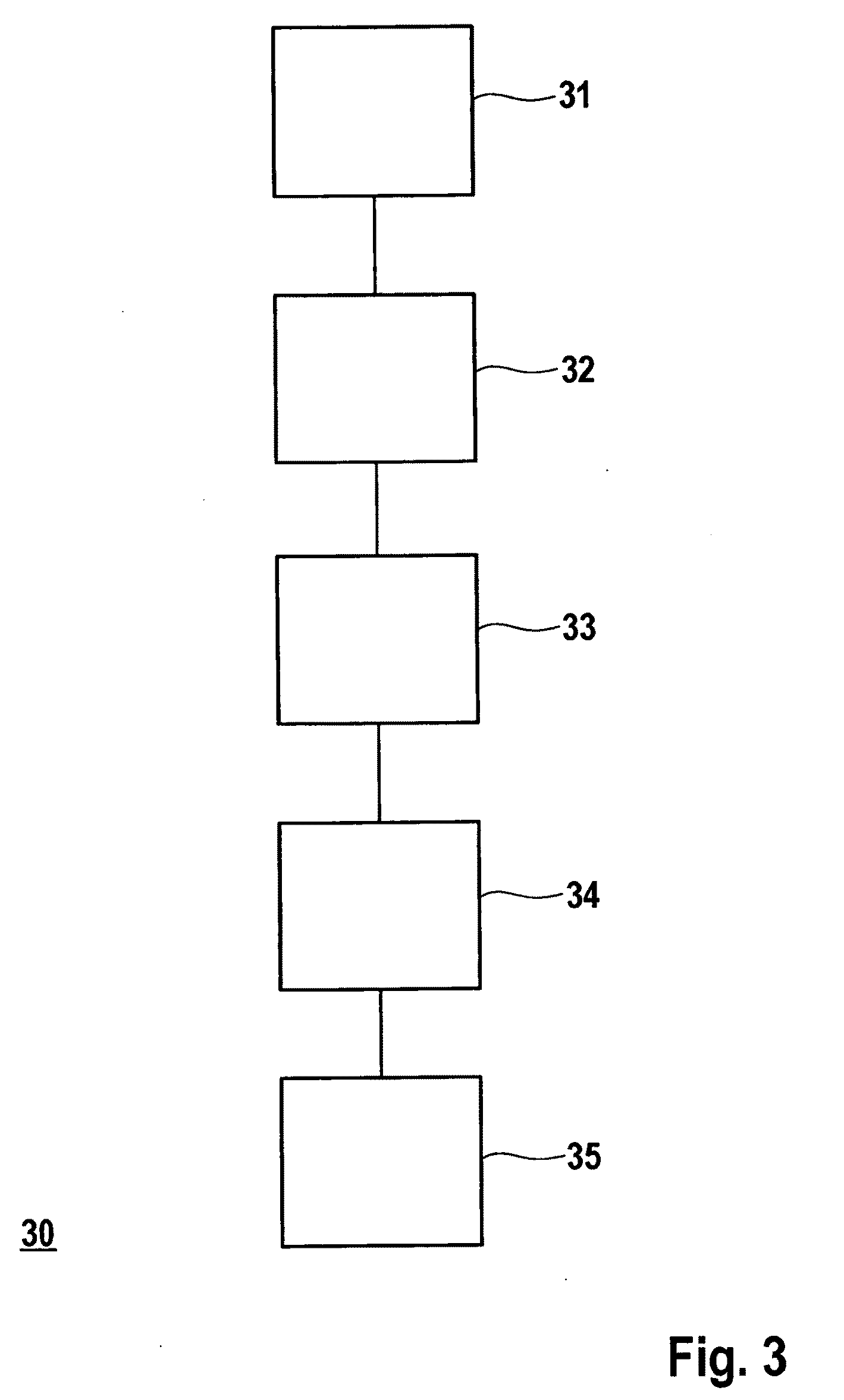Method for detecting a traffic space
a technology of traffic space and detection method, which is applied in the field of traffic space detection, can solve the problems of not being able to distinguish whether a distant object is moving quickly, not being able to make the distinction of real-time speed, and proposals that are neither real-time capable nor robust enough for automotive engineering applications, so as to achieve better detection
- Summary
- Abstract
- Description
- Claims
- Application Information
AI Technical Summary
Benefits of technology
Problems solved by technology
Method used
Image
Examples
Embodiment Construction
[0031]The exemplary embodiments and / or exemplary methods of the present invention is used in a driver assistance system which is provided in a motor vehicle for the support of the driver. FIG. 1 shows a simplified schematic block diagram of such a driver assistance system. Driver assistance system 1 includes at least one monocular image sensor 12 for detecting the traffic space traveled by the motor vehicle. This image sensor 12 is, for example, a camera based on CCD technology or CMOS technology. In addition to image sensor 12, numerous additional sensors may be provided, for example radar / lidar or ultrasound sensors which, however, are not shown in detail in FIG. 1 but instead are represented by the block diagram. Image sensor 12 is connected to a control unit 10. The additional sensors (block 11) are also connected to control unit 10. Control unit 10 processes the signals of the sensors.
[0032]Also connected to control unit 10 is a function module which in particular connects driv...
PUM
 Login to View More
Login to View More Abstract
Description
Claims
Application Information
 Login to View More
Login to View More - R&D
- Intellectual Property
- Life Sciences
- Materials
- Tech Scout
- Unparalleled Data Quality
- Higher Quality Content
- 60% Fewer Hallucinations
Browse by: Latest US Patents, China's latest patents, Technical Efficacy Thesaurus, Application Domain, Technology Topic, Popular Technical Reports.
© 2025 PatSnap. All rights reserved.Legal|Privacy policy|Modern Slavery Act Transparency Statement|Sitemap|About US| Contact US: help@patsnap.com



